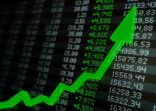Fan Cheuk Wan, HSBC Private Banking
After a strong risk rally to date in 2021, the continued cyclical recovery, improving corporate earnings and a low-but-volatile rate environment will support the outperformance of risk assets and cyclical sectors.
“A change in growth leadership from manufacturing to services will bode well for the growth outlook of the consumer discretionary sector in the second half of the year,” said Fan Cheuk Wan, chief investment officer for Asia, private banking and wealth management, at HSBC.
The private bank is overweight global equities for the rest of 2021, with a preference for stocks in the US, UK, Germany, France, China and Singapore.
For fixed income, meanwhile, it remains overweight global investment grade and high yield credit, emerging market and Asian bonds.
Specifically in Asia, HSBC Private Banking maintains a mildly overweight position on Asia ex-Japan equities and credit. This is based on the strong fundamentals and valuation appeal after the relative underperformance of Asian stocks versus the global benchmark since March.
Five portfolio drivers
Positioning for the next phase of recovery, the bank sees attractive opportunities from Asia’s new growth path, digital transformation, sustainability revolution and the vast infrastructure spending in technology upgrades and the low carbon transition.
These are reflected in five key themes: China’s future society and technology; the power of the Asian consumer; Asia’s supply chain revamp; China’s green revolution; and Asian credit opportunities.
On China, HSBC Private Banking expects the 14th Five-Year Plan to spur new policy initiatives to pursue quality of growth, urbanisation, the rise of the middle class and financial inclusion.
“Technology innovation and localisation are among the key objectives in the 14th Five-Year Plan. Focus areas include semiconductors, biotechnology, medicine, network communication, modern energy sources and artificial intelligence,” explained Patrick Ho, HSBC’s chief investment officer for North Asia, private banking and wealth management.
At the same time, for China to meet its green pledges, it hopes to raise the non-fossil fuel mix to 20% of total energy consumption by 2025.
“We think there are exciting opportunities for makers of equipment and materials in the solar and wind energy sector,” Ho said. “We are looking for 39% new energy vehicles penetration rate in 2030 and forecast new energy vehicles sales to jump to 11 million units in 2030.”
Ho also highlighted that consumption in Asia should stage a robust recovery in the coming quarters amid the vaccine deployment, better public healthcare policies and a global economy recovery.
Even for economies yet to see the peak of their latest waves of Covid-19 outbreaks, consumers still have the power to spend, thanks to extra savings from fiscal stimulus payments or underspending in the past year or so. Plus, prospects in the job market are turning more positive.
“We see opportunities in leading domestic consumer brands, and luxury and premium goods as well as consumer services. Companies catering to digital consumers should see a long-term uptrend in total addressable markets as consumer preferences have shifted in favour of ecommerce after the pandemic,” said Ho.
In terms of Asia’s supply chain revamp, manufacturers are now optimising production in view of the dynamics in trade policies, market reforms and structural change in labour costs.
“Within the Regional Comprehensive Economic Partnership member countries, the common trade rules would allow an optimisation of the supply chains across North and Southeast Asian countries to take advantage of lower costs of production and diversification of the production base,” Ho noted.
Further, in Asian credit, there is an attractive risk/return trade-off and a potential substantial yield pick-up from regional corporate bonds over developed market credit, according to Ho.
At the corporate level, the pandemic has negatively impacted revenue generation, leverage and funding costs in 2020. However, the effects should not last with government support and the global recovery should help rebuild their balance sheets and bolster cash flow.
















